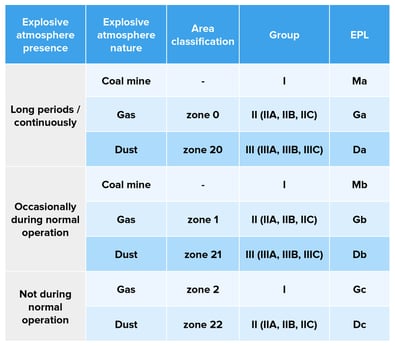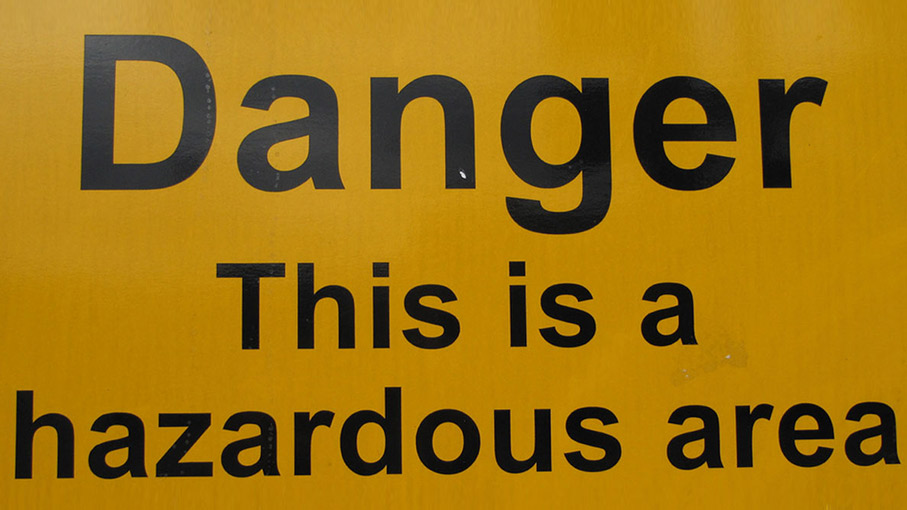After the introduction of the "ATEX Directives" the identification of the potential risk of an explosion has become a crucial issue for every company. In fact, the directives have introduced, if not accentuated, the direct responsibility of the employees and their managers with regards to the safety of the employees. In particular the directives have enforced the obligation for employees and managers to assess the status of the company in relation to the mentioned risk.
Therefore, a thorough knowledge of hazard definitions and hazardous areas classification should be a fundamental part of managers and owners technical and legal background.
In Europe and in most of the world outside North America, the standards for the identification of the risks of explosion are provided by the International Electrotechnical Commission “IEC 60079 Explosive Atmospheres” regulation. IEC 60079-10-1 provides the following definitions of “Explosive Atmosphere” and “Hazardous Area”. According to the standard, an “Explosive Atmosphere” is a mixture with air, under certain atmospheric conditions, of flammable substances in the form of gas, vapor, dust, fibers, or volatiles which, after ignition, permits self-sustaining propagation. Consequently a “Hazardous Area” (gas) is an area in which there is (or it’s expected to be present) an explosive gas atmosphere in quantities such as to require special precautions for the construction, installation and use of equipment.
Outside North America, with regards to the areas classification, hazardous areas are categorized according to zones and groups. In North America, instead, hazardous areas are classified by the Class/Division system - or by a Zone system adapted to the IEC standards.
Zones
A Zone defines the frequency and duration of the occurrence of an explosive atmosphere. The Zone system has 3 levels of hazard for gas or dust.
Gases, Vapors and Mists (IEC 60079-10-1 Classification of areas - Explosive gas atmospheres):
· Zone 0: Ignitable concentrations of flammable gases or vapors which are present continuously or for long periods of time
· Zone 1: Ignitable concentrations of flammable gases or vapors which are likely to occur under normal operating conditions
· Zone 2: Ignitable concentrations of flammable gases or vapors which are not likely to occur under normal operating conditions and do so only for a short period of time.
Dusts (IEC 60079-10-2 Classification of areas - Combustible dust atmospheres):
· Zone 20: An area where combustible dusts or ignitable fibers and flyings are present continuously or for long periods of time.
· Zone 21: An area where combustible dusts or ignitable fibers and flyings are likely to occur under normal operating conditions.
· Zone 22: An area where combustible dusts or ignitable fibers and flyings are not likely to occur under normal operating conditions and do so only for a short period of time.
Groups
Groups define the type of hazardous material nature and (in part) the location of the surrounding atmosphere. They are divided by IEC 60079-20-1 and IEC 60079-20-2 into 3 categories:
· Group I: Mines susceptible to firedamp (flammable mixture of gases naturally occurring in a mine).
· Group II: Explosive gas atmosphere other than mines susceptible to firedamp. Subgroup A: Atmospheres containing propane, acetone, benzene, butane, methane, petrol, hexane, paint solvents or gases and vapors of equivalent hazard; Subgroup B: Atmospheres containing ethylene, propylene oxide, ethylene oxide, butadiene, cyclopropane, ethyl ether, or gases and vapors of equivalent hazard; Subgroup C: Atmospheres containing acetylene, hydrogen, carbon disulphide or gases and vapors of equivalent hazard.
· Group III: Explosive dust atmosphere. Subgroup A: Atmospheres containing combustible flyings; Subgroup B: Atmospheres containing non-conductive dust; Subgroup C: Atmospheres containing conductive dust.
Hazardous Areas Classification Summarizing Table

Area classification derived from IEC 60079-10-1 (for gas) and IEC 60079-10-2 (for dust) and minimum Equipment Protection Level of products that could be installed.


